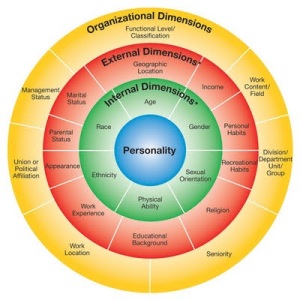Managing a Diverse Workforce
When you hear the word diversity, what do you think of? Race first perhaps, then gender? Age maybe? I encourage you to look past the physical characteristics of a person and into his/her personal culture – that is their values, beliefs, and attitudes. Those areas are what contribute to the workplace and understanding how to manage a team who differs in culture is critical to an effective organization as you will rely on high performing, low-chaos environments.
The goal of diversity management is to build an inclusive organizational culture, where each individual and cultural perspective is allowed to enhance the workplace and create synergy. Although challenges exist in integrating a diverse workforce, we will find the benefits of doing so greatly outweigh them. It is ultimately the job of those managing the diverse workforce to recognize these challenges and to make the changes as necessary to enhance the efficiency of the diverse workplace.
Diversity is that unique quality that at once makes us different but also helps us share similarities beyond those differences. Remember that despite differences, human beings are genetically more similar than they are different. As a result, much of the true diversity between human beings comes from the way in which they view the world and apply meaning to it, which may also cause conflict when two different perspectives clash.
Purpose of Groupings
Grouping based on a dimension is one way to begin our understanding of an individual. Due to our inherent need to categorize, we are often socialized to believe that members of certain groups behave in specific ways, referred to as stereotypes. As individuals, we resist being put into a generalization based on any aspect of our character. At the same time, these stereotypes help us as managers to develop awareness of the challenges different individuals face.
Primary Dimensions of Diversity
In order to see the culture of each person and ultimately manage a diverse workforce effectively, it may be necessary to understand how the dimensions of diversity influence us and those around us.
Primary dimensions include those aspects of our identity that are considered unchangeable. This includes race, disability, sex/gender, age, sexual orientation, and national origin. Because we are not simply one of our dimensions (ex. female) but rather many dimensions, grouping or stereotyping is not an effective way to manage individuals.
Impact to the workforce
Aspects of diversity can also be influenced by visibility. In general, the more visible an aspect is, the more influential it is on how someone sees you. In order to influence how a person is perceived by those around him/her, one might consider changing those visible aspects or work toward minimizing them. One may feel the need to hide a disability or increase/decrease their perceived age in order to fit the workplace. Clearly this is not an organizational culture that is inclusive.

